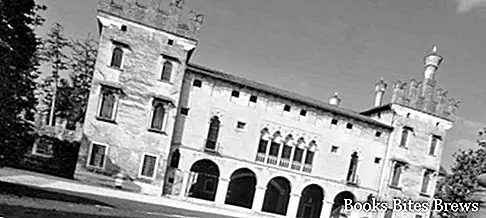What to see in Thiene, an itinerary including the main monuments and places of interest, including Villa Porto Colleoni Castle, San Vincenzo Church and San Gaetano Cathedral in Santa Maria Assunta.
Tourist information
Thiene is a town in the province of Vicenza, located in the high Veneto plain in the Pedemontana area between the Astico and Leogra valleys.
The city has its origins from a Roman castrum, transformed into a fortified citadel during the Lombard period.
In 911 the emperor Berengario del Friuli transferred the full dominion of the entire piedmont and mountain territory between the right of the Brenta and the Astico to the bishop of Padua.
For this reason, Thiene still belongs to the diocese of Padua.
From the twelfth to the fourteenth century Thiene followed the political fate of Vicenza.
In 1281 the excavation of the Roggia was completed, a canal that originates in the Municipality of Santorso and stretches for a length of 14.4 km in the direction of the Thienese plain, fed by the Timonchio and Timonchiello streams.
This work was very important for the development of agriculture and craft activities, as many artisan shops were built along the waterway where wood, iron, copper, wool, hemp, silk and skins.
The Roggia entered the Thienese territory from the north, in Contrà Capovilla, where in 1333 the splendid church of San Vincenzo was erected, the oldest religious building in Thiene.
The small cult building, in the Romanesque-Gothic style, preserves inside precious frescoes attributed to the 15th century Veronese school and depicting episodes from the life of San Vincenzo.
From 1404 until 1797, Thiene was under the dominion of the Republic of Venice.
Recommended readings- Veneto: Sunday day trips
- Schio (Veneto): what to see
- Vigo di Cadore (Veneto): what to see
- Vittorio Veneto: what to see
- Agordo (Veneto): what to see
In 1492 the Republic of Venice granted Thiene the duty-free market, to compensate for the aid provided by the Thienese during the Battle of Rovereto in the war against Sigismund of Tyrol in 1487.
This recognition contributed significantly to the expansion of trade, so much so that in the seventeenth century the market of Thiene was the most important in the northern Vicenza area.
At the end of the fifteenth century the local nobles began to build the country villas, where they lived for long periods, above all to check the various activities that took place on their farms.
What see
During this period, the Porto family, one of the richest families in the Vicenza area at the time, also built a residence which, through more than five hundred years of life, has undergone many transformations, extensions and embellishments, reaching our days in all its splendor. .
It is the Villa Porto Colleoni, symbol of the city of Thiene, also known as Il Castello, as it combines the characteristics of the castle with those of the typical Venetian palace, with functions of residence, warehouse and place used for trade.
Today the building is owned by the Counts of Thiene, who allow scheduled visits.
In front of the castle entrance tower stands the small monumental complex of the church dedicated to the Nativity of the Virgin Mary, including the oratory, the sacristy and the chaplain's house.
The chapel, also known in the city with the name of the Red Church and visited on request, was built in 1476 as a noble chapel of the castle of Thiene.
The Cathedral of Thiene, dedicated to San Gaetano in Santa Maria Assunta and located in the heart of the city, is the result of a succession of buildings and expansions that took place over its millenary history.
In Thiene, on the first weekend of October every two years, the historical re-enactment linked to the liberation of Rovereto, called the Vicinia dei Capi Famiglia, takes place, with a plea to the Doge, concession of the Franco Market, customs and activities of the time.




